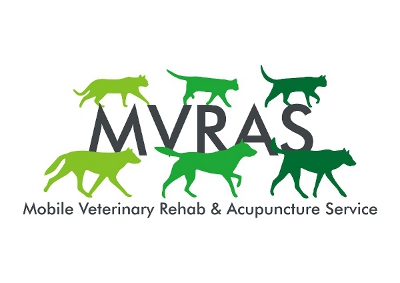
MVRAS information
Osteoarthritis
Osteoarthritis (OA) is a form of degenerative joint disease (DJD) that can affect the joints in your pet's body. The term osteoarthritis comes from osteo which refers to bone and arthritis which refers to inflammation at the joint surfaces. The part of the joint that is affected most by this condition is the articular cartilage. The articular cartilage is found inside of the joint surface and acts as a protective buffer. During OA this cartilage is degenerated until at the end stage of the disease, the joint is just a bone on bone joint without the cushioning effect of the cartilage. The degenerative nature of the disease is why we also use the term degenerative joint disease for OA.In dogs, the type of DJD that occurs is most often a result of another event that somehow impairs the function of the joint and is called secondary DJD or OA. The types of events that can initiate this degenerative process include, trauma such as being hit by a car, abnormal joint development like hip dysplasia or chronic injury to the structures surrounding the joint like cranial cruciate ligament damage to the knee. These events can all cause the joint to begin to function in a way that causes abnormal wear and tear on the cartilage. In some cases these initiating events can be repaired before significant damage occurs such as by repairing a ruptured cranial cruciate ligament. Unfortunately the initial degenerative changes will remain unless the joint is replaced.
Cats appear to develop primary DJD due to wear and tear of the joints more often than because of secondary DJD. Also, DJD in cats is found in more than one joint when we first recognize it as a problem. Signs that your cat may have arthritis are behavioral changes that you may see. These include only using the rim of the litter box or eliminating outside of the box as it is too difficult for them to climb inside, not jumping up or down or to as high a height as they once did. They may also avoid their owners and avoid being petting or brushed.
DJD is a progressive condition that causes pain, lameness and disability in the joints that are affected by the disorder. Our goal is to increase our pet's quality of life by treating them with a variety of methods that make them more comfortable. The lameness and disability caused by osteoarthritis can be reduced with physical rehabilitation for your pet and acupuncture treatments of the affected joints. The pain caused by DJD can be managed by acupuncture and pain relieving medications.
Additionally, weight reduction in overweight or obese patients can bring immediate relief to the joints by reducing their workload. Other treatments for DJD include nutritional supplements and, more recently, stem cell therapy. Lastly, modifications to the pet's household can be made to accommodate their condition. A few of these modifications include, adding stair steps to allow them access to sleeping areas, raising their food bowls so they can eat more comfortably, or placing them on the floor if they can reach the food more easily at that height. All pets that suffer from osteoarthritis can be treated with a combination of methods that together will help them be more comfortable and can improve quality of life at any level of disease.
Pet Health Matters
contact:
drkelly@mvras.com All rights reserved © 2010-2025.